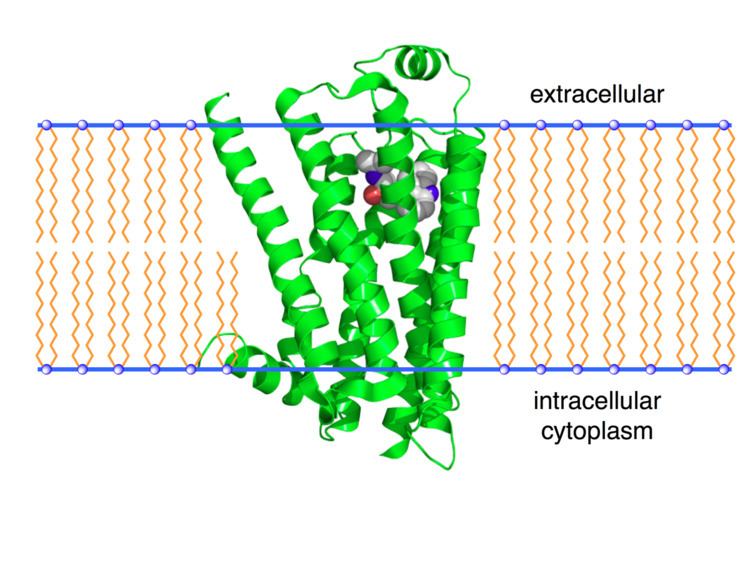Entrez 154 | Ensembl ENSG00000169252 | |
 | ||
Aliases ADRB2, ADRB2R, ADRBR, B2AR, BAR, BETA2AR, adrenoceptor beta 2 External IDs OMIM: 109690 MGI: 87938 HomoloGene: 30948 GeneCards: ADRB2 | ||
The beta-2 adrenergic receptor (β2 adrenoreceptor), also known as ADRB2, is a cell membrane-spanning beta-adrenergic receptor that interacts with (binds) epinephrine, a hormone and neurotransmitter (ligand synonym, adrenaline) whose signaling, via a downstream L-type calcium channel interaction, mediates physiologic responses such as smooth muscle relaxation and bronchodilation. Unlike other adrenergic receptors, norepinephrine does not produce β2 receptor stimulation. (Citation needed)
Contents
- Gene
- Structure
- Mechanism
- Function
- Circulatory system
- Eye
- Digestive system
- Other
- Antagonists
- Interactions
- References
The official symbol for the human gene encoding the β2 adrenoreceptor is ADRB2.
Gene
The ADRB2 gene is intronless. Different polymorphic forms, point mutations, and/or downregulation of this gene are associated with nocturnal asthma, obesity and type 2 diabetes.
Structure
The 3D crystallographic structure (see figure and links to the right) of the β2-adrenergic receptor has been determined by making a fusion protein with lysozyme to increase the hydrophilic surface area of the protein for crystal contacts. An alternative method, involving production of a fusion protein with an agonist, supported lipid-bilayer co-crystallization and generation of a 3.5 Å resolution structure.
Mechanism
This receptor is directly associated with one of its ultimate effectors, the class C L-type calcium channel CaV1.2. This receptor-channel complex is coupled to the Gs G protein, which activates adenylyl cyclase, catalysing the formation of cyclic adenosine monophosphate (cAMP) which then activates protein kinase A, and counterbalancing phosphatase PP2A. Protein kinase A then goes on to phosphorylate (and thus inactivate) myosin light chain kinase, which causes smooth muscle relaxation, accounting for the vasodilatory effects of beta 2 stimulation. The assembly of the signaling complex provides a mechanism that ensures specific and rapid signaling. A two-state biophysical and molecular model has been proposed to account for the pH and REDOX sensitivity of this and other GPCRs.
Beta-2 Adrenergic Receptors have also been found to couple with Gs, possibly providing a mechanism by which response to ligand is highly localized within cells. In contrast, Beta-1 Adrenergic Receptors are coupled only to Gs, and stimulation of these results in a more diffuse cellular response. This appears to be mediated by cAMP induced PKA phosphorylation of the receptor.
Function
Actions of the β2 receptor include:
Circulatory system
Eye
In the normal eye, beta-2 stimulation by salbutamol increases intraocular pressure via net:
In glaucoma, drainage is reduced ( open-angle glaucoma) or blocked completely (closed-angle glaucoma). In such cases, beta-2 stimulation with its consequent increase in humour production is highly contra-indicated, and conversely, a topical beta-2 antagonist such as timolol may be employed.
Digestive system
Other
Antagonists
* denotes selective agonists to the receptor.
Interactions
Beta-2 adrenergic receptor has been shown to interact with:
